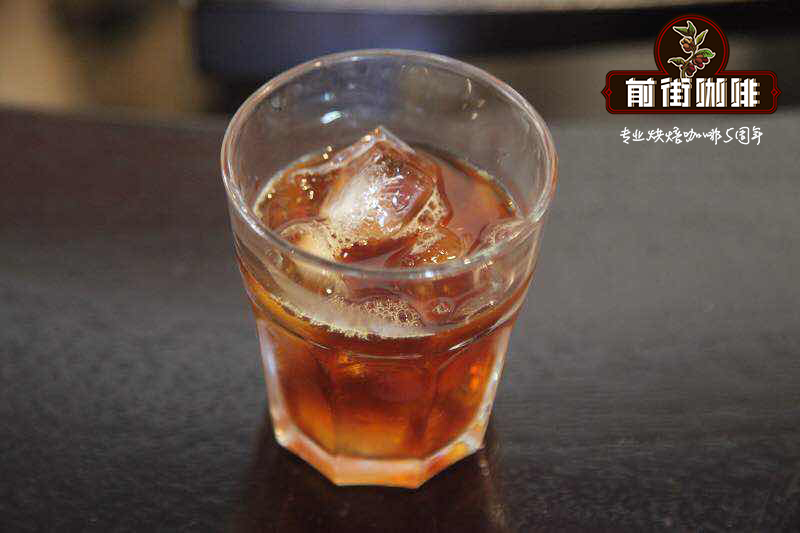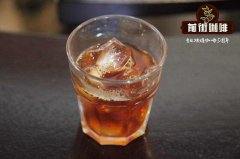What chemical reaction does the aroma of coffee beans come from during roasting? Coffee beans at different roasting stages

Professional coffee knowledge exchange more coffee bean information please follow the coffee workshop (Wechat official account cafe_style)
What chemical reaction does the aroma of coffee beans come from during roasting? What is the taste of coffee beans at different roasting stages?
The charming aroma of coffee is also the main reason why Napoleon, me and many coffee fans miss coffee all the time. But why on earth does the coffee smell so good? The most important thing, of course, is that coffee beans themselves store a variety of raw materials, such as carbohydrates, proteins, lipids, organic acids and so on. After heating and baking, it will start a series of complex reactions, creating an attractive aroma.
The roasting stage of coffee beans
The following describes the changes of coffee beans in each baking stage.
Change process
After the raw coffee beans absorb heat, the color changes from green to yellow, and the moisture content of beans begins to decrease.
Heat energy converts the moisture inside the coffee bean into steam → and produces carbon dioxide → inside the coffee bean.
Coffee beans internal pressure up to 25 bar → the first explosion: coffee beans in the roasting process will appear a very representative popping sound
Dehydrated coffee beans begin to release heat and turn brown, peeling off a layer of silver.
The volume of roasted coffee beans will increase by 1.5-2 times, resulting in a weight loss of at least 11%.
Continue to bake coffee beans will continue to produce carbon dioxide → second explosion
The color of coffee beans deepens and enters the stage of medium and deep baking. At this point, the weight loss is up to 22% of the original weight.
After the second explosion, the coffee beans are oiled due to pyrolysis and begin to carbonize, which is likely to be scorched if they are not careful.
Fragrance development
Three or four aromas begin to develop during the drying stage.
The aroma and flavor of coffee are released by two chemical reactions:
Mena reaction: chemical changes in sugars and amino acids to degrade proteins when the moisture content of coffee beans is less than 5%.
Caramelization: a chemical reaction between water, sugar, and sucrose.
As the baking time goes on, the sour taste decreases, the bitterness increases, and many aromatic molecules begin to volatilize.
At the end of roasting, nearly 800 flavor substances will be developed, and the flavor, acidity, sweetness and mellowness of coffee beans will also reach maturity.
But roasting can sometimes bring out the unpopular flavor of coffee.
In the final stage, the aroma is destroyed and replaced by bitterness, the acidity is gone, and the mellowness is reduced.
Can I use color as a basis?
The roasting of coffee beans does not have a uniform color, which can be used as a basis for the degree of baking.
A more accurate method should be based on the total baking time to determine the time of the first explosion.
Ratio of roasting to caffeine
The caffeine content of raw coffee beans hardly changes with the degree of roasting (caffeine loss rate is about 10%).
However, the longer the coffee is roasted, the more weight the coffee loses (weight ratio is about 11-22%).
In this case, the proportion of caffeine naturally increases.
At present, the popular baking degree tends to be shallow.
When the coffee beans are roasted to a certain extent, the aroma will be gradually obscured by the roasted taste.
Only light roasting can retain the obvious aroma of coffee.
Coffee roasters must compromise and decide which aroma characteristics should be left behind.
For example, if the roaster wants the coffee to have a lot of aroma and taste sour, then the mellowness of the coffee will have to be sacrificed.
A beloved sour taste
Moderate baking can highlight the original natural sour taste of coffee beans.
The heat energy from baking will destroy more than 40 kinds of chlorogenic acid in coffee beans.
And break down into quinic acid and caffeic acid; both substances have convergence and may affect the taste.
Most other organic acids, such as citric acid and malic acid, reach their maximum in light baking.
After that, it will gradually decrease as the baking time increases.
This explains why fast baking and light roasting are more likely to show the distinct sour taste of coffee beans.
The two most important reactions are caramelization (caramelization, oxidation and browning of sugars) and Mena (Maillard reaction, reaction of amino acids with sugars). Both reactions require the participation of sugars, and the rich sucrose in raw beans provides the materials needed for these two reactions. Previous studies also found that there was a positive correlation between sucrose content and coffee bean flavor. From the table below, it can be seen that the content of sucrose (Sucrose) in Arabica is twice as much as that in Robusta, which also explains why the flavor of Arabica coffee beans is better than that of Robsta.
(1) caramelization reaction
Once I ordered a cup of Guatemala-Huehuetenango near the Kaohsiung Cultural Center and spent a beautiful afternoon with "my Life of Adventure" (My Life As An Explorer by Sven Hedin). After drinking coffee, I accidentally found that the dry coffee stains at the bottom of the cup were arranged into interesting patterns, so I picked it up to see if I could see the jackpot number of the next big lottery, but I didn't see it for a while.
In 15, I thought the patterns were more like an explorer marching among the rolling brown sand dunes in the desert. All of a sudden, the sweet smell of caramel flashed for a moment, and then smell it carefully, the sweet smell of caramel came from the bottom of the cup. Isn't the tiny Nanguo I ordered black coffee? Why is there the sweet smell of caramel? Later, I found that the black coffee itself is really sweet, especially the sweetness of caramel! But the sweetness of each kind of coffee varies depending on the variety of beans and the way it is roasted.
The sugar in coffee beans is caramelized at about 170 ℃, which is exactly the melting point of sucrose (185 ℃) and the temperature of the explosion stage when coffee beans are roasted. The product of caramelization is divided into two parts:
The dehydration product of sugar is caramel or sauce.
The pyrolysis products are mainly volatile aldehydes and ketones.
Generally speaking, fire-roasted aroma, caramel and color are produced in the caramelization reaction, as well as other aromatic substances such as maltol, Cyclotene, furan and so on. These compounds can also be found in red wine, fruit juices, cream and other foods.
However, if caramel is too much in the baking process is not a good thing, but will cause carbonization, making the coffee dry and choking. If the caramel is not enough, it will make the aroma monotonous and lack of layers.
(II) Mena reaction
Recently, more and more coffee shops set up a baking machine in front of the store to bake by themselves, so that they can not only save costs but also control their own quality. So walking on the street, you can often smell the unique aroma of roasted coffee beans, including the burning blue smoke smell of plant fibers, the sweet smell of cream, the brown smell of toast, and so on. Most of these rich flavors come from the Mena reaction during baking.
The Mena reaction can be divided into three stages.
First, at the initial stage:
Carbonylamine condensation Amadori molecular rearrangement
Second, in the medium term:
Amadori molecular rearrangement product fructosamine is dehydrated to HMF (hydroxymethylfurfural)
Deamination of fructosamine to reducing ketone
Interaction of Amino acids with dicarbonyl compounds
Third, at the end of the year:
Aldol condensation
Polymerization of melanin
In addition to sugars, proteins also account for about 11% of the weight of raw beans, and the amino acids contained in these proteins are exactly the raw materials needed in the Mena reaction. Mena reaction refers to the amino acids and reducing sugars (glucose, fructose, lactose, etc.) in food. ) A series of reactions in the heating process. Mena reaction produces a variety of aromatic substances and pigments such as Pyridines, Pyrazines, Oxazoles, Thiazoles, Pyrroles. The Mena reaction plays an important role in the flavor of food cooking, whether it is the blackening and fragrance of the sausage when baking sausages, the soft roast chicken on the outside and the delicious baked bread. Mena reaction is responsible for the complete color, smell and flavor of these barbecue foods.
Coffee is blessed with a wide variety of complex chemicals, in addition to the above-mentioned compounds, there are other organic acids, inorganic acids, plant bases and so on. Not only the sweet and beautiful ingredients, some slightly bitter compounds make the coffee flavor have a wider level and change, and work together to create a unique rich taste of coffee.
Important Notice :
前街咖啡 FrontStreet Coffee has moved to new addredd:
FrontStreet Coffee Address: 315,Donghua East Road,GuangZhou
Tel:020 38364473
- Prev

What is the chemical reaction in the roasting process of coffee beans? What is the thermal decomposition reaction of coffee beans during roasting
Professional coffee knowledge exchange more coffee bean information please follow the coffee workshop (Wechat official account cafe_style) what are the chemical reactions in the roasting process of coffee beans? What is the thermal decomposition reaction of coffee beans during roasting? After roasting at high temperature, coffee beans will produce a variety of charming aromas and flavors, mainly because of the chemical reactions that take place inside the beans during roasting.
- Next

How to turn coffee fruits into raw coffee beans? Does coffee raw bean fermentation belong to honey treatment?
Professional coffee knowledge exchange more information about coffee beans Please follow the coffee workshop (Wechat official account cafe_style) how to turn coffee fruits into raw coffee beans? Does coffee raw bean fermentation belong to honey treatment? Most coffee producers in Taiwan are trapped in washing. On the one hand, they have misunderstandings, on the other hand, they have little knowledge of it, and on the other hand, they think they have amazing martial arts tips. So that Taiwan coffee
Related
- Detailed explanation of Jadeite planting Land in Panamanian Jadeite Manor introduction to the grading system of Jadeite competitive bidding, Red bid, Green bid and Rose Summer
- Story of Coffee planting in Brenka region of Costa Rica Stonehenge Manor anaerobic heavy honey treatment of flavor mouth
- What's on the barrel of Blue Mountain Coffee beans?
- Can American coffee also pull flowers? How to use hot American style to pull out a good-looking pattern?
- Can you make a cold extract with coffee beans? What is the right proportion for cold-extracted coffee formula?
- Indonesian PWN Gold Mandrine Coffee Origin Features Flavor How to Chong? Mandolin coffee is American.
- A brief introduction to the flavor characteristics of Brazilian yellow bourbon coffee beans
- What is the effect of different water quality on the flavor of cold-extracted coffee? What kind of water is best for brewing coffee?
- Why do you think of Rose Summer whenever you mention Panamanian coffee?
- Introduction to the characteristics of authentic blue mountain coffee bean producing areas? What is the CIB Coffee Authority in Jamaica?

